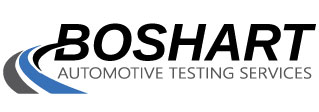Update to On-Board Diagnostics (OBD-II) Rate-Based Data Report Templates
The OBD II gasoline and diesel rate-based data report templates have been updated.
The OBD II regulation, specifically section 1968.2(j)(3), requires manufacturers to submit rate-based data to ARB indicating the in-use monitoring performance of the major OBD II monitors on their in-use vehicles.
Manufacturers are required to use these updated templates for all rate-based data submissions to the ARB no later than July 21, 2014. The updated templates can be found at the following
website:
http://www.arb.ca.gov/msprog/obdprog/obdupdates.htm
If you have any questions or comments pertaining to the templates, please contact Wendy Gallardo by phone at (626)450-6229 or by e-mail at wendy.gallardo@arb.ca.gov .
Background:
OBD systems are self-diagnostic systems incorporated into the computers of new vehicles. The OBD II system monitors virtually every component that can affect the emission performance of the vehicle to ensure that the vehicle remains as clean as possible over its entire life, and assists repair technicians in diagnosing and fixing problems with the computerized engine controls. All 1996 and newer model year light-duty and medium-duty vehicles less than 14,000 lbs. are equipped with OBD II systems, while heavy-duty vehicles over 14,000 lbs. have phased in OBD systems starting with the 2010 model year. For further information about the OBD program, please visit the OBD website at http://www.arb.ca.gov/msprog/obdprog/obdprog.htm.
(Original information provided by CARB – 5/19/14)
